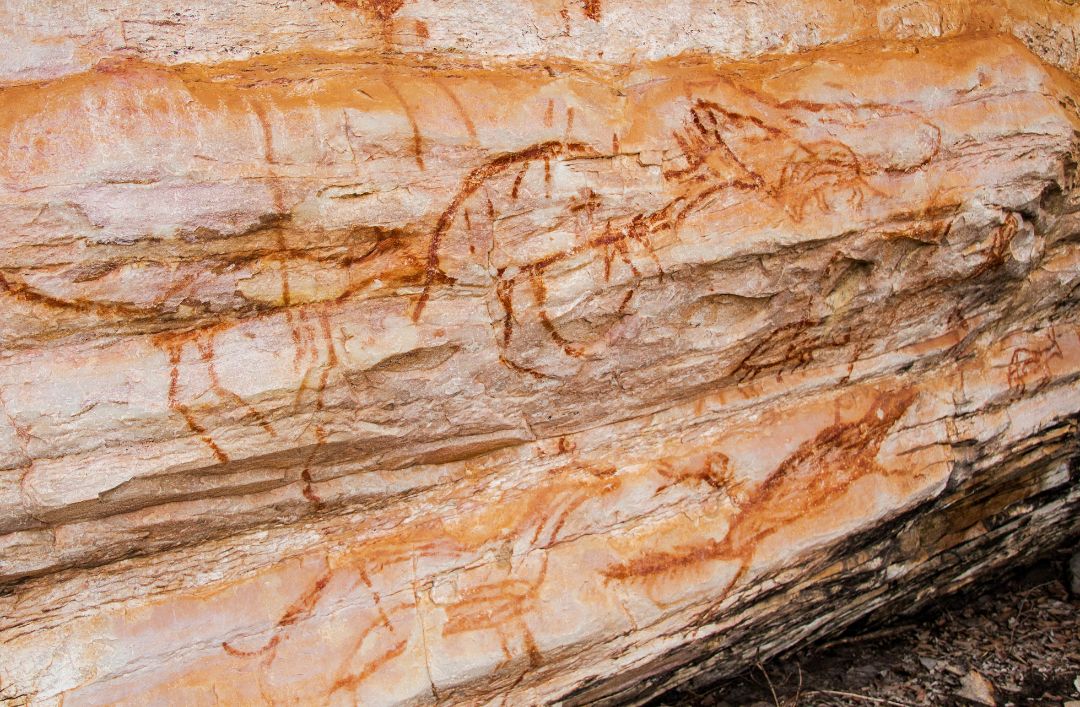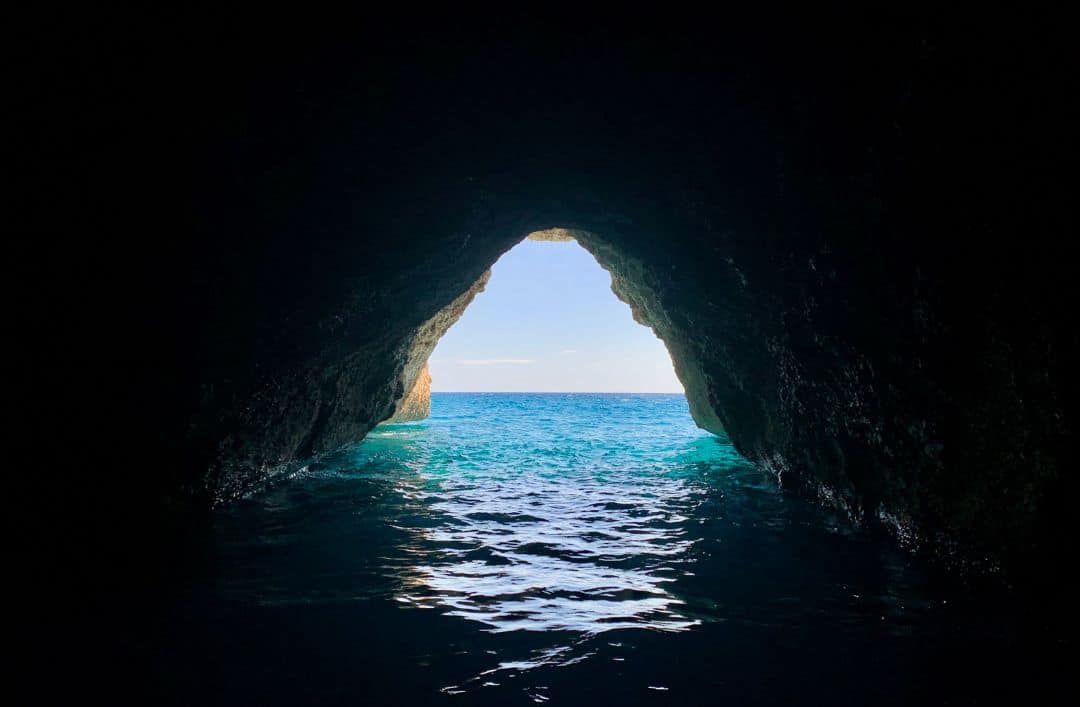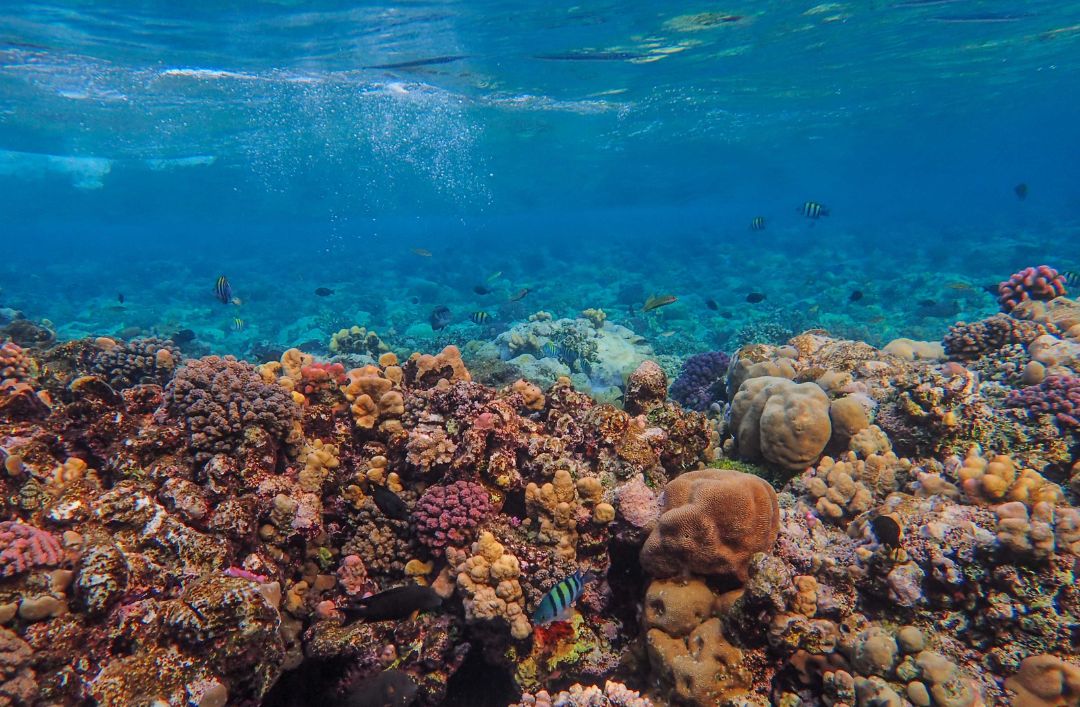
Mar 28, 2023 | Activities/Services, Local events
With the onset of good weather, it’s time to get out of the house, breathe in the fresh air and feel the spirit of nature and the light that bring life to Cumbre del Sol. There are endless things to do around your home, however our blog always has something new to offer from end to end of the Costa Blanca Norte.
Benissa is one of the least-known places in the Marina Alta. This gap in awareness of its existence is actually commensurate with its beauty. It has one of the oldest town centres in the area, as well as lovely countryside, beaches and monuments with an endless list of things to do, both in the town and its surrounding area. One of its most picturesque (and unknown) attractions is surely its cave paintings. We tell you about them in this article, where to find them, and how to visit them.
The charm of the unknown
There is nothing like discovering something new somewhere just a few kilometres from your home, and that is exactly the case with these cave paintings. You can reach the place on foot along a hiking trail, just 5 kilometres from Benissa, or if you prefer, you can also get there by car. It is close to the rural district of Pinos at a place called Abrigo de Pinos (Shelter of the Pines but also known locally as “Barranc de la Tía Isabel”).
The shelter is an overhang of chalky rock some 200 metres long which has several caves, in one of which you will find the paintings. They were discovered in 1970, and in 1985 they were officially declared as Cultural Heritage and, subsequently a World Heritage Site. The set of paintings is protected by a metal grill placed on the rock wall so that the paintings can be viewed without getting too close, thus they are protected from deterioration or any other problems. There are four explanatory panels alongside them so that you can situate them in time and understand the figures, as many are camouflaged by the rock. Even so, the one known as “Eva Pinera” has become an iconic figure. Standing with arms akimbo, experts have dated this painting as 6,000 to 8,000 years old. At just 50 centimetres away from this figure, it is possible to discern a zoomorphic representation typical of the Levante which has been partially lost. There is also another portrayal of four figures that appear to be holding hands.
Unmissable Benissa
If having viewed the paintings you are thinking of what else you can do, we suggest that you visit Benissa if you don’t know it yet. In the Marina Alta, and only a short distance from the road leading to places like Calpe, Moraira, Altea, Teulada or Benidorm, the town is easy to reach and an essential stop-off in the Costa Blanca Norte.
One of the reasons that you will love this place is its cuisine. Strongly influenced by the sea and the mountains, it is varied and made with care. The star dish here is “putxero de polp”, or octopus casserole, originally a fishermen’s dish. This stew is made with pulses (beans) potatoes, vegetables and rice.
Benissa is a must-see if you want to discover somewhere in the Marina Alta that is less well-known, but certainly no less charming. Some months ago we published a post on plans for things to do in Benissa and you can read about it here. We suggest that you look out for our upcoming blog posts so that you don’t miss out on anything going on around Residential Resort Cumbre del Sol.

Mar 15, 2023 | Activities/Services, Events, Otros pueblos
Cherry blossom time is one of the year’s great events. Every springtime the cherry blossom in the Vall de la Gallinera, in the Marina Alta, rewards us with this spectacle. It is a phenomenon that usually occurs mid-March to early April depending on the weather.
The Costa Blanca Norte in general and Cumbre del Sol in particular is one of the loveliest places in Spain, known for its beaches and coves, but also for its interior. This area inland is one of the best places to see the cherry trees in bloom. It is a spectacle that has been acknowledged by the Comunitat Valenciana Tourist Office and also travel magazines such as Condé Nast Traveler. This district is up there with the best known parts of Spain, such as Alfarnate, in Málaga, the Valle del Jerte, in Cáceres, El Hornillo in Ávila and the Valle de las Caderechas in Burgos as one of the best places to view one of nature’s spectacles.
Historically known as a cherry producing area, La Vall de Gallinera is a village of 570 inhabitants that lies in a valley. The river Gallinera runs through it and it is ringed by the mountains of the Sierra del Almirante, the Sierra de la Albureca and the Sierra Foradada.
Benirrama, Benialí, Benissivà, Benitaia, La Carroja, Alpatró, Llombai and Benissili make up the area where you enjoy a unique sight in the Comunitat Valenciana region along the “8 Villages Trail”. This is the ideal way to discover the area as you pass by the natural springs, water troughs, charming little streets, the surrounding countryside and of course cherries. We tell you the best way to go about it!
Discover inland Costa Blanca Norte
The “8 Villages Trail” is a route that you take at any time of the year, as we have mentioned it is particularly recommended in March, to coincide with the cherry blossom that carpets the slopes of Vall de Gallinera with a blanket of white.
The trail is 14 kilometres long, although you can walk just parts of it as you wish. The route is signposted and runs mainly through tarmac farm tracks, with only slight inclines (with the odd exception) and so it is ideal for children on one of those sunny Sundays that are perfect for a family outing.
However, this is not a circular route, so the entire return trip is 28 kilometres which might be a bit much if you simply want to enjoy the countryside. So instead we recommend one of the following options:
- If you travel with 2 cars, you could leave one at the start, and park another one at the end of the trail, and that way you can walk the whole 14 km just one way.
- Simply walk a part of the route. In that case you could start out from one of the villages along the way. It would probably be best to choose one of the central villages which have the most services and facilities if you are planning to stop and eat, Benialí, where La Vall town council is located, is a good choice.

One of the main attractions along the route are the innumerable springs that bubble up fresh and clear from the mountain peaks of the Serra Foradà, on the southern side of the valley and from the Serra de l’Almirall, which encloses the valley to the north.
The trail is indicated at all times. In each village you will find panels containing information, as well as signposts at regular intervals along the way.
In short, this is a route for everyone, because you can walk the trail (and see the springs, public laundry places and enjoy the countryside in this beautiful valley) or by car and enjoy exploring all the villages.
The area is well kept with a lot of history and architectural, artistic and natural heritage. A spectacular landscape with its high mountains and a lively environment. We cannot think of a better plan close by, as spring approaches, than to have a wander around these eight villages with the cherry blossom as an added extra.

Mar 6, 2023 | Activities/Services, Cumbre del Sol
When some weeks ago we told you about the most interesting caves that you can visit inland in Costa Blanca Norte, we decided it would be a good idea to follow up with a second part to tell you about the sea caves in the area. Most of these are in the vicinity of Cumbre del Sol and it’s possible that there may be some that you don’t know about yet.
Cova del Riu Blanc
Close by the Cala del Moraig beach and Cova dels Arcs, in Benitachell, the Cova del Riu Blanc is concealed inside La Falla del Moraig. It can be accessed from the sea by swimming from Cala Moraig, a distance of some 250 to 300 metres (although we advise swimming with flippers, paddle surfing or canoeing). The falla del Moraig is a spectacular, almost vertical wall of rock. Its polished appearance and the striations caused by friction of the blocks clearly show the geological movements that led to this rock formation. The fault seems to be suspended in the air over a lake and in its interior lies the underwater entrance to Riu Blanc. However, be especially careful when entering the cave, as it can be extremely dangerous to linger there when the tide is rising. To ensure a safe visit, it would probably be best to contact one of the local companies that organise trips and that way you make sure that your visit will be safe and secure.
Cova dels Arcs
The Cova dels Arcs, which is also in Benitachell, as well as being a magical place for watching the sun rise or for snorkelling (in the well-known “divers’ chamber”, the easiest to access), is also an ideal area for expert cavers who can enter what is considered to be the longest underwater outlet to the sea in Spain.
Jávea: cave zone
Next we go to the Jávea district to discover the Cova Tallada. In this spectacular cave, remains have been found from the Al Andalus era of Spain and there you can picture how this quarry was in use from the 12th century, and there are legends that tell how it was once a marine refuge during the Second World War. Technically, it is not a completely natural rock formation as it has been altered by man through repeated removal of the roughhewn rock. The area outside the cave is perfect for snorkelling and especially worth seeing is the 16th century inscription that reads: “PHILIPUS III HISP REX CAVERNAM HANC PENETRAVIT AN MDXCIX” (Philiip III visited this cave in 1599).

We consider that the ideal access to the Cova del Llop Marí is by sea, however, this will always depend on conditions such as the wind, waves and currents. This is one of the best kept secret places of the Costa Blanca Norte, with its amazing crystal clear waters and nooks and crannies filled with marine life.
Continuing in Jávea, we come to the Cova dels Òrguens. This is a particularly special place at the foot of Cap de la Nau, and it’s possible to enter by small boat, surfboard or canoe.
Denia: Cova De L’Aigua
One of the most historic caves, frequently used in the past, is Cova De L’Aigua which is a refuge for marine flora, and in the past it also served as a shelter for Roman soldiers. In fact, it is still possible to see an inscription in this regard engraved on the cave wall (protected by a grill). Rainwater has filtered into the interior of the cave and it was used as a water tank until the 16th century.
Every secret corner of the Costa Blanca Norte comes as a surprise. We have mentioned some of the sea caves that are hidden away under the finest waters in the Mediterranean. We suggest you follow our upcoming blog posts to keep abreast of everything going on in Residential Resort Cumbre del Sol.

Feb 27, 2023 | Activities/Services
Sports tourism and specifically, professional cycling has become an important activity in the Costa Blanca, especially in recent years. Witness to this fact are the twelve international cycling teams that have chosen the Costa Blanca Norte as the location for their sports training, added to which there are two local teams, one in Gandía and another in Benicassim.
The area’s outdoor sports culture, the temperatures (which are pleasant all year round with a scant 22 days rainfall out of 365 days) and the steep and hilly landscape make it the perfect place for cyclists. That’s why teams sponsored by Movistar, Astana or Bahrain, to name just a few, prepare and train for their sport in the municipal districts of Costa Blanca Norte.
What makes it so special?
As we mentioned, the climate is one of the Costa Blanca Norte’s great advantages. Finding somewhere with so many hours of sunshine and ideal temperatures for outdoor sports all year round is no easy task, yet here you have it all.
We should also mention the different types of cycling surface. From roads to mountains, it is possible to adapt the routes according to the cyclist’s profile and proficiency.
Given this veritable deluge of cyclists in the area, the region has considerably improved its sports facilities, with new bike parks for mountain bikes, as well as a new and extensive range of hotels and catering to meet the needs of both professional teams and cycling enthusiasts who visit the Costa Blanca. Not only that, but the environment is completely safe. Many coastal areas are not equipped with the requisite infrastructure, above all in terms of roads safe for cycling. However, the Comunidad Valenciana and various other locations on the Costa Blanca in general, particularly in the northern part, have been working for years to create a safe system which is always in adequate conditions for practising this sport.

Historic competition scenario
This relation goes back a long way. Many sporting competitions have developed or passed through the Costa Blanca Norte. For example, the Costa Blanca Bike Race 2023 opens the mountain bike season in Spain, and it is planned as the first stop of the year for the best of the world XCM cyclists. Furthermore, Cumbre del Sol, was the goal of the 9th stage of La Vuelta a España in the 2015 and 2017 races, as well as being considered in 2019 as one of the so called “most exciting climbs”.
The Comunidad Valenciana Cycle Race has passed through the municipalities of the Costa Blanca Norte on several occasions and 2023 is no exception. In particular, on 2 February the second stage of the competition passed through Cumbre del Sol. The race began in Novelda and ended in the area of Alto de Pinos in Cumbre del Sol (Benissa).
If you are a sports enthusiast, and in particular, a fan of cycling, you will already know that Cumbre del Sol is the perfect place for this pastime, albeit your own cycling or for enjoying the various competitions that take place in the Costa Blanca Norte. We suggest you keep an eye on our blog posts to keep abreast of activities and events near your home.

Feb 9, 2023 | Activities/Services, Benitachell, Cumbre del Sol, Other towns, Otros pueblos
It might not be the best known attraction of the Costa Blanca Norte, but the interior of many of the region’s mountains harbour a network of caves (some of which are open to visitors while others remain inaccessible) that enrich the landscape, and when you venture inside some of them you may well come across vestiges of the past life of this place.
The latest exciting news about the world of caves concerns Cova de les Morretes in Benitachell. Following some important 20th century finds involving treasure, work on restoring the cave has now been completed and if you are walking the Ruta dels Penya-Segats trail, you will come across it in an exclusive location that boasts some of the finest views of the Costa Blanca Norte. A museum no less, that looks out to sea.
These caves once served as a refuge for locals who struggled to make a living from fishing and by working the adjacent terraces. In order to supplement their meagre income, they also dabbled in a bit of smuggling, most likely tobacco.
Having completely restored the walls, roof and some of the interior elements, while at all times keeping the essence of the place and its original materials, the idea of this Cultural Heritage site is to “museumise” the cave so that it can be visited both physically and virtually, making it accessible to anyone interested in paying a visit. So now you have something more interesting to do on your Sunday hiking trail near Cumbre del Sol!
Costa Blanca Norte: cave area
If a visit to the Cova de les Morretes has whetted your appetite, you’re in luck. As we mentioned, the Costa Blanca Norte harbours a multitude of caves to visit or view on your country walk. We tell you about some of them below.

Rull Cave
This cave is in Vall de Ebo. It was discovered by José Vicente Mengual, known as Tío Rull, in 1919. In the 60s it was restored and made available for visits, and remained open to tourism until 1970. Later it was inherited by his heirs who sold it to the Public Authority in in 1995 and it was again opened to tourists, once the installations had been refurbished. Today it is open to the public and you can also take advantage of a guided visit as well.
Las Calaveras Cave
This cave which was discovered in the 16th century is in Benidoleig and is 70 metres above sea level. Its takes its name from the fossilised remains of hyenas, horses, bears, bulls hippopotamus and rhinoceros that were found in the cave interior, which are now housed in Alcoy museum.
Adsubia Cave
Also known as the cave of Canalobres (not to be confused with the Caves of Canelobre) you will find this cave in Adsubia. It is a perfect example of a little corner of the subterranean world that conceals a wealth of valuable natural treasures that are guaranteed to make your visit an amazing experience.
Canelobre Caves
These caves are found in Busot and they are probably the best known of this whole list. They consist of a space extending over more than 80,000 m², accessed through a 45 metre tunnel, in which water and rock have combined over centuries to create impressive stalactites, stalagmites and columns. One interesting fact in this regard is that the roof of the cave is one of the highest vaults in the whole of Spain, measuring 70 metres high. Not only that, due to its magnificent acoustics, it has been used on numerous occasions for music concerts.
As always, the Costa Blanca Norte can surprise you when you are least expecting it. In this blog post we have told you about the caves that can be found in the mountain areas, however, in an upcoming post we plan to tell you all about the wealth of marine caves that lie under the Mediterranean waters. Keep an eye open for our future blog posts!

Jan 30, 2023 | Activities/Services, Other towns
Water comprises almost three quarters of the Earth. Water flows through different places, rivers, lakes, glaciers, seas, and oceans. Most of it in these last two bodies of water, and of those, we only know about 5% of their depths which harbour treasures in the deep just waiting to be discovered.
The Costa Blanca Norte is an unmissable destination for fans of scuba diving. The main reason is the beauty of the marine depths that are host to an enormous wealth of flora and fauna which will delight anyone seeking to explore the sea bed. Throughout this area you will find different routes for diving and there are several schools where you learn about this sport, such as La Galera or Dive & Dive. In this blog post we tell you about some really special ones.
Starting out at La Granadella
For real beginners, or those without much experience who want to get involved in this world, our first recommendation would be to follow one of the underwater routes that you can find at La Granadella beach. It is well known for the beauty of its sea bed and admired by all divers. In fact, the route closest to the beach, from where it can be accessed directly, is an easy one with a maximum depth of around 10 metres.
El Vaporet
A few miles from the port of Denia, you can find “El Vaporet”, a former cargo vessel that sank in the late 19th century. If you dive there you will see several species that shelter in the wreck, as there are no rock formations in the vicinity, and you can find conger eel, lobster, spiny lobster, along with white seabream, gilt head bream and grouper. They are, however, found at a considerable depth, and given the currents there, and possibly reduced visibility, it is advisable to undertake this particular route only when conditions are excellent, and if you are a really experienced diver.
El Freskito
You´ll find this place on the beach of las Rotas de Denia, some 4 km from the port. In the swimming pool created by natural rock and transparent sea water, this easy and beautiful route begins. It’s a good idea to explore the craggy rocks that make up the pool walls as there you may see octopus, European fan worm, spoon worm and perhaps a Moray eel.
Cap de Sant Antoni: La Cullerà and Primera Ensenada
The first of these caves can be found at the foot of the cliffs of the Marine Reserve of Cap de Sant Antoni. If you want to dive in this cave, which penetrates up to 50 metres into the mountain, it is necessary to get permission from the Board of the Environment to explore it. Armed with this permit, you can explore the cave which is at a depth of 9 metres where you will find slipper lobster, meagre, and a conger eel here and there. Not to mention octopus, sea bream, grouper and plenty of meagre hiding in the myriad nooks and crannies in the rocks.

Another excellent route in this area is Primera Ensenada, which is just before you reach the lighthouse. This area is protected (you will need authorisation to enter) and lies at a depth of 16 metres where the sea bed is shaped by the large rocks scattered here and there in the sand, and it offers an exceptionally beautiful and lively environment, perfect for seeking out species that are difficult to spot in other places.
The area around the Cap de Sant Antoni lighthouse is also a place where you can contemplate the beauty of the Costa Blanca marine depths. Here the enormous rocks on the seabed are particularly striking, as they create passageways and a play of shadow and light, providing a spectacle that will charm underwater photographers. Throughout the route you will see the white gorgonian coral, and depending on how close to the rock wall you venture, you can dive down from 12 to 19 metres, a depth at which you can spot an even greater variety of interesting species of flora and fauna.
Doesn’t it make you want to get into your wetsuit? Whether you live close to Cumbre del Sol or you simply came upon this artícle when you were looking for things to do on the Costa Blanca Norte, we would encourage you to enter this marvellous world and discover the best waters that the Mediterranean sea has to offer.











